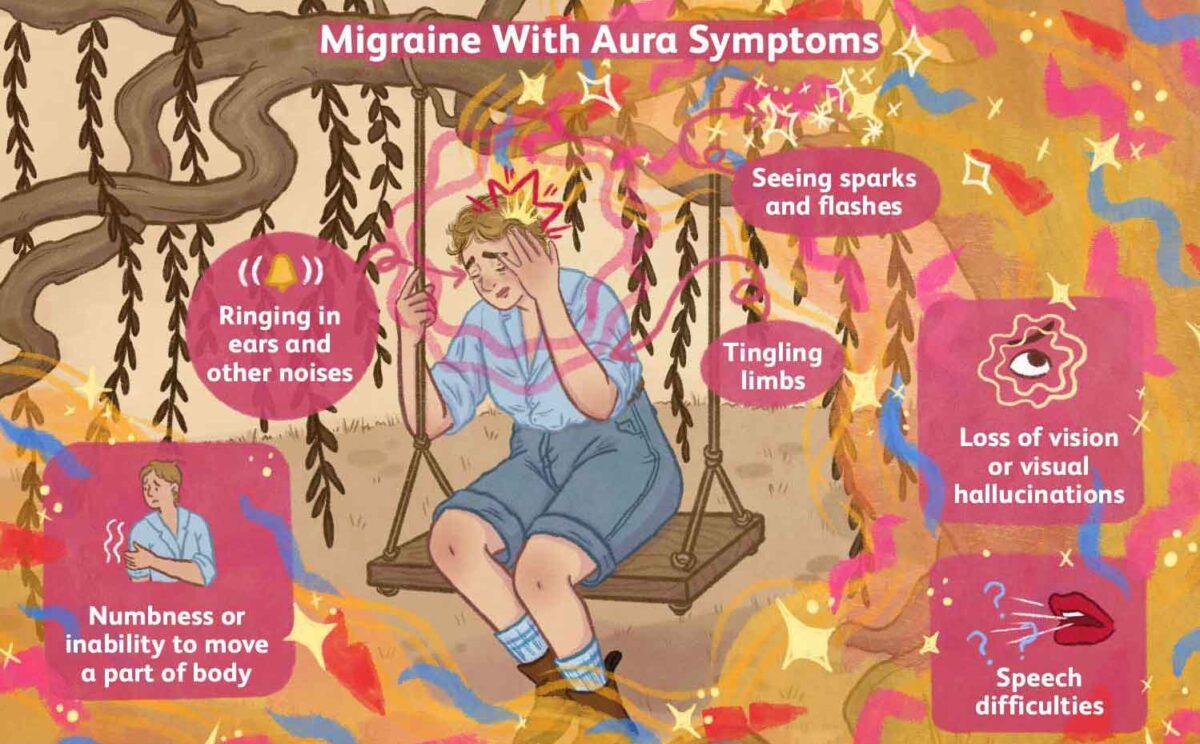Migraine with Aura
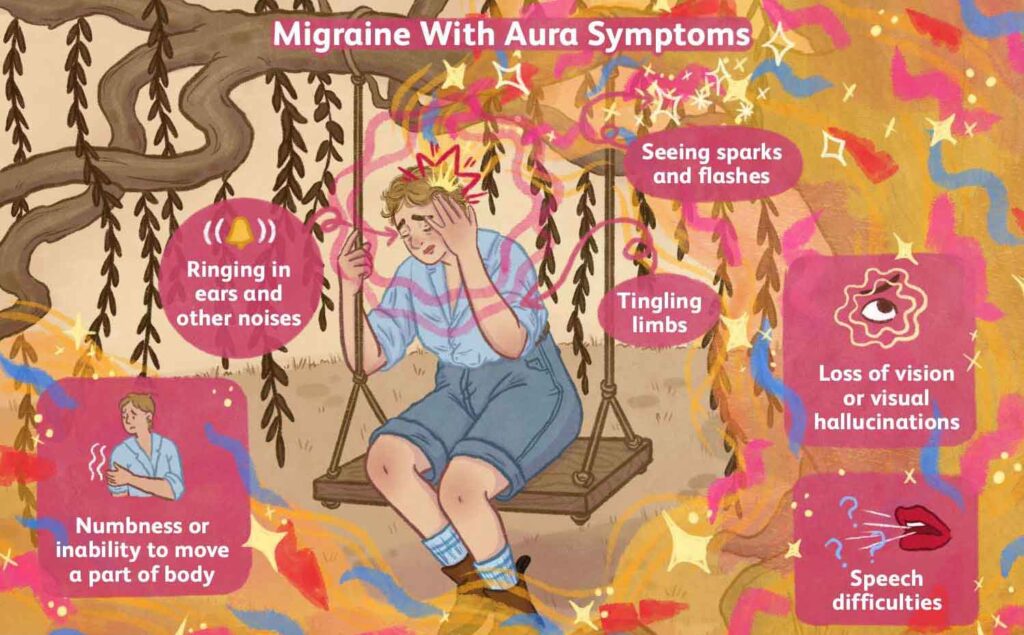
Migraine with Aura : Causes, Symptoms & Treatment
Migraine is a neurological condition affecting almost 29.5 million Americans. The majority of people experience moderate to severe headaches. About a quarter of all migraines occur with auras. In any case, you might not have one with each migraine. A few children and more aged adults might get an aura however no pain.
People who manage migraine aura experience visual, sensory, or motor unsettling influences not long before a migraine attack. This phenomenon mostly lasts for an hour or less, and symptoms might go from seeing sparkles and crisscrosses to the failure to talk. Albeit uncomfortable, a migraine aura isn’t dangerous. Nevertheless, it can mimic symptoms of other difficult circumstances, like stroke. In this way, it’s essential to look for medical care if you think something suspicious is going on.
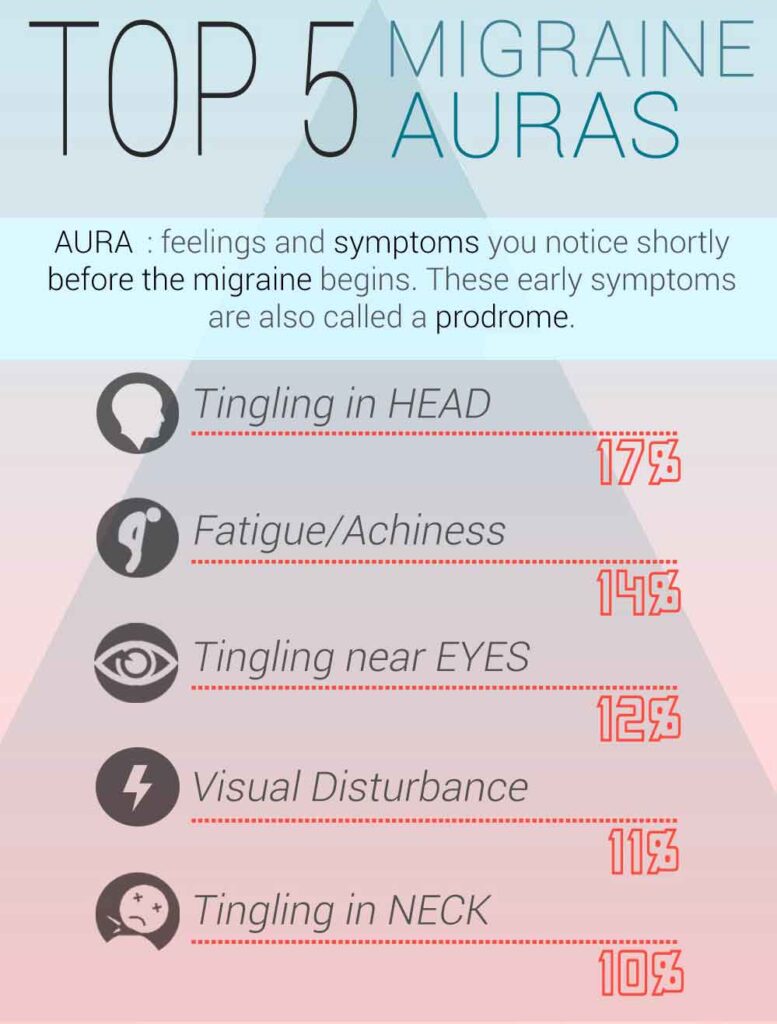
What is Migraine with Aura?
A migraine aura is viewed as a “warning stage” that occasionally happens before the onset of a migraine headache. Migraine aura alludes to quite a few sensory unsettling influences, including spots, ignites, or crisscrosses in your vision. Certain individuals experience tinnitus, dizziness, or even the inability to speak clearly.
This condition might happen before or during a migraine attack — typically 30 to an hour preceding the head pain. It’s essential to take note that a migraine aura doesn’t occur during each migraine episode.
While an aura happens just previously or during a migraine attack, the prodrome stage can begin days before to demonstrate an attack is coming on. Prodrome symptoms could incorporate fatigue, irritability, or neck pain.
Aura can happen in four types of migraine :-
- Migraine with aura (with or without a headache) :- Also known as classic migraine.
- Migraine with brainstem aura :- This starts either in the base of your brain (brainstem) or on both sides of your brain.
- Hemiplegic migraine :- It is a rare type of migraine that causes weakness on one side of your body (hemiplegia).
- Retinal migraine :- This migraine causes vision changes in one eye before the migraine begins.
Migraine with aura is different from a headache. Different medications are available for both. Connect with Texas Specialty Clinic and get quality treatment for migraines and headaches.
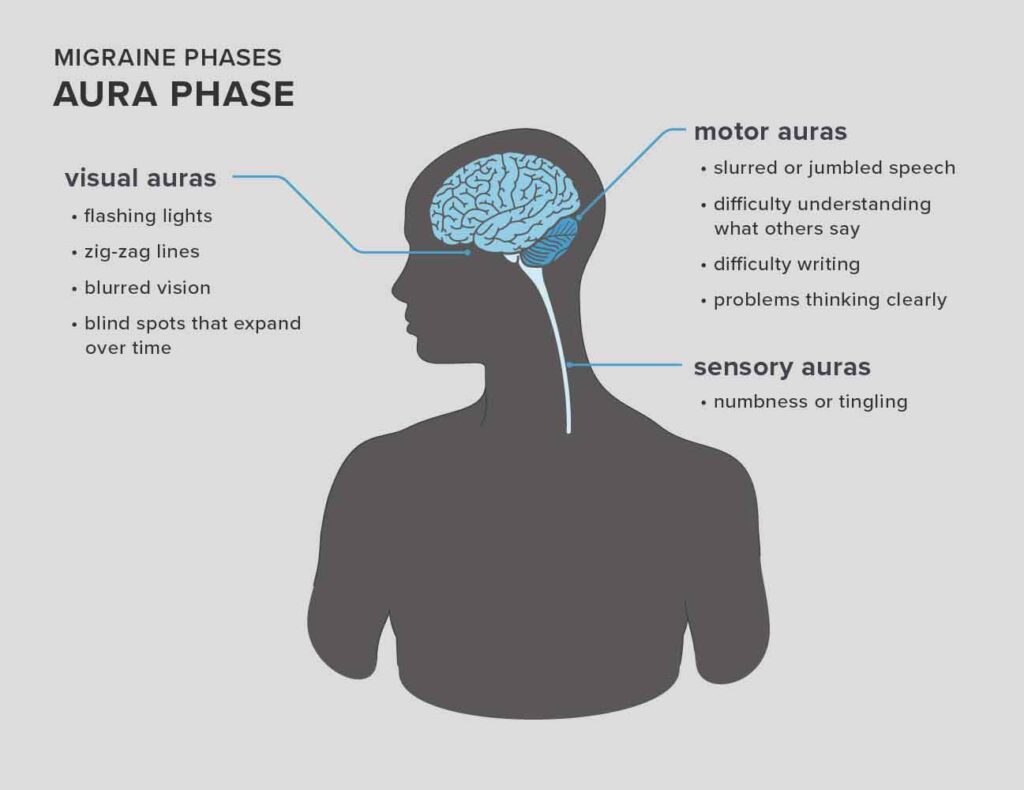
How to Identify Migraine with Aura?
Migraine with aura can result in a variety of different symptoms.
- Visual symptoms :- Visual auras are the most widely recognized sort of aura. A few symptoms you might experience during a visual aura incorporate :-
- Seeing jagged flashes of light, stars, or bright spots.
- Having zigzagging lines or geometric shapes in your field of vision.
- Partial vision loss or blind spots (scotomas).
- Sensory symptoms :- Aura can also prompt changes in sensation. These symptoms can happen regardless of a visual aura. The principal symptoms of a sensory aura are sensations of numbness or tingling, or a “pins and needles” sensation. This tingling sensation might start in one arm and travel up. This feeling can likewise happen on one side of your face, lips, or tongue.
- Speech and language symptoms :- Aggravations in speech and language are more uncommon aura symptoms. Symptoms might incorporate :-
- Slurred speech
- Mumbling
- Unable to form the right words
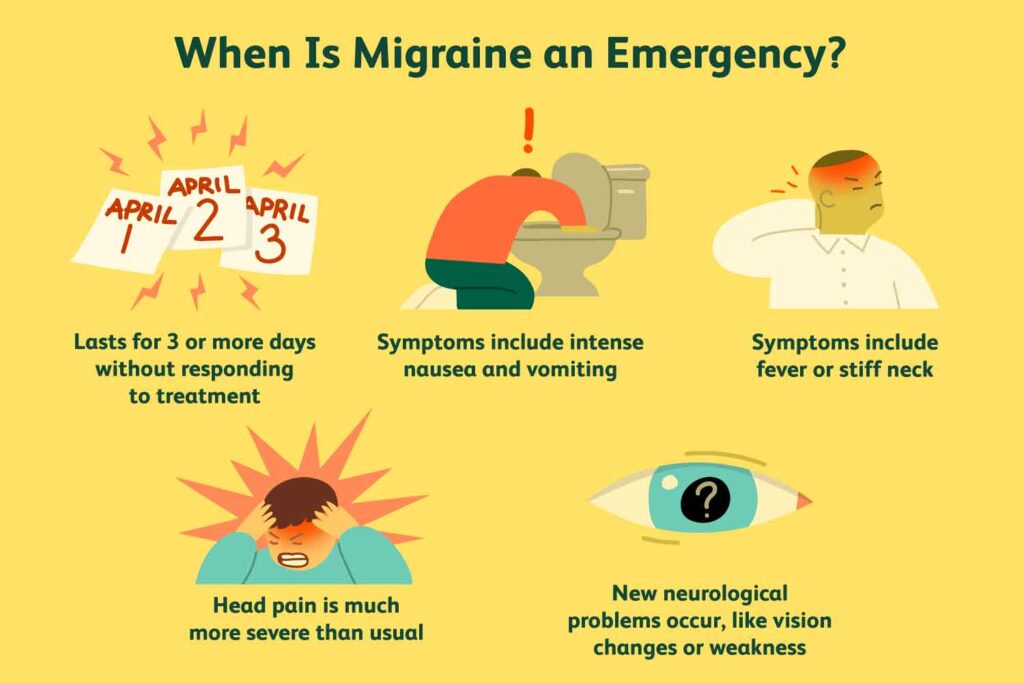
What triggers a Migraine with Aura?
It’s not surely known what precisely goals an aura. Being brought about by a wave of electrical activity that spreads across the cortex of the brain is accepted. This wave is then trailed by prolonged concealment of nerve cell activity. This can prompt different changes, such as changes in the bloodstream, which might prompt migraine symptoms.
It’s additionally conceivable that an aura might be triggered by the same things that can trigger migraine attacks without an aura. These can incorporate :-
- Stress or anxiety.
- Not getting enough sleep.
- Missing or having irregular meals.
- Consumption of alcohol or caffeine.
- Some foods, like chocolate, aged cheeses, and cured meats.
- Food additives such as MSG or aspartame.
- Hormonal changes, like during menstruation.
- Bright lights, strong smells, or loud noises.
- Strong exercise.
- Changes in the weather.
- Certain medications.
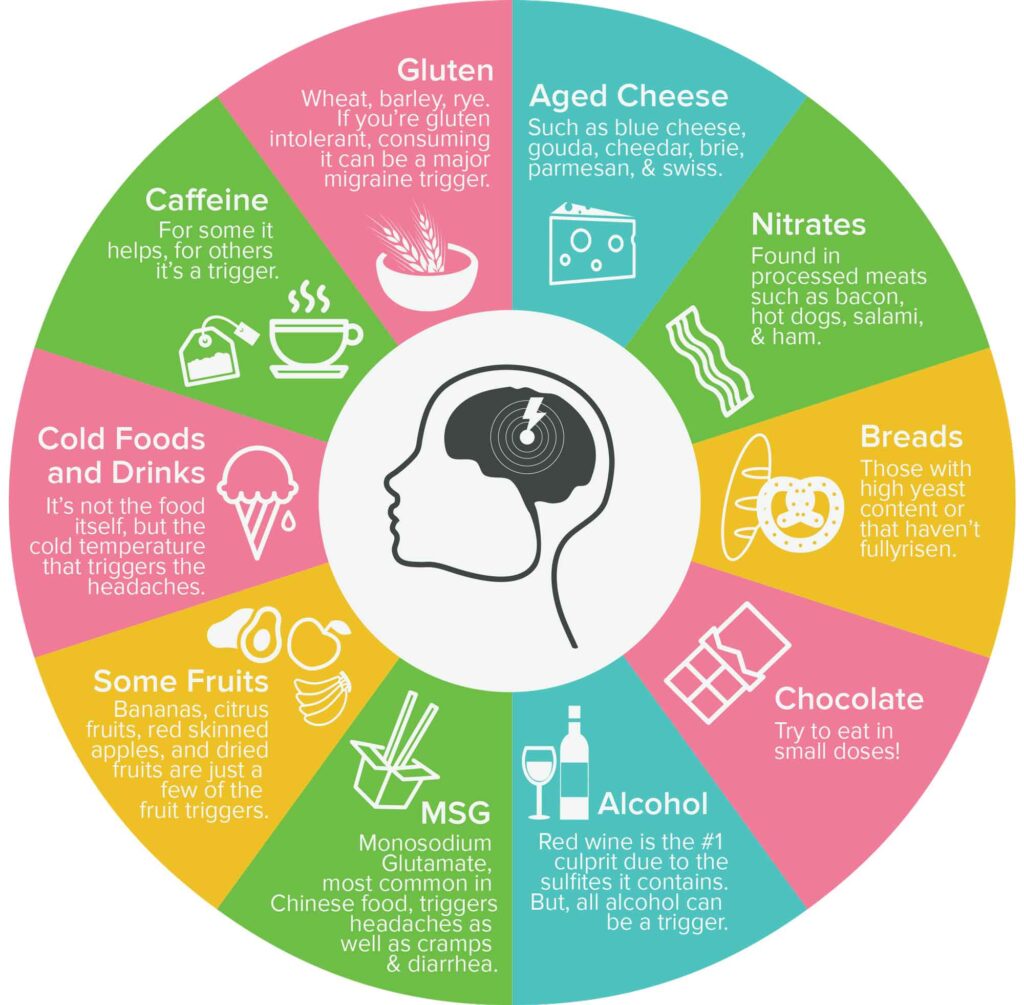
Can Aura occur without a Headache?
It’s feasible for an aura to happen without a migraine headache. This is called silent migraine. Albeit the migraine pain doesn’t happen, the aura symptoms themselves can in any case be disruptive to daily activities. Ocular migraine, a kind of migraine attack characterized by visual symptoms, can once in a while happen without pain. Migraine with aura and retinal migraine is in some cases thought about kinds of ocular migraine. Migraine attacks that happen without pain may in some cases be analyzed as transient ischemic attacks (TIAs) or seizures because of the symptoms being so comparative.
Treatment options for Migraine with Aura
Migraine aura treatment is focused on easing symptoms. In most cases, migraine aura symptoms start gradually. Episodes usually last between 20 and 60 minutes. Your healthcare provider may recommend several medications, including :
- Pain relievers :- Prescription or over-the-counter pain drugs — like acetaminophen, ibuprofen, or aspirin — can ease migraine aura and related pain.
- Triptans :- Drugs such as Sumatriptan and rizatriptan block the pain pathways in the brain. These medications are usually prescribed as pills, injections, or nasal sprays.
- Dihydroergotamine nasal spray or dihydroergotamine injection :- These medicines are available as nasal spray or injection; this drug is most effective when taken shortly after the start of migraine symptoms for migraines that tend to last longer than 24 hours. These medications can be taken at the onset of a migraine attack to lessen symptoms.
- Opioids :- These medications might be suggested for people who can’t take triptans or dihydroergotamines. Since opioids are profoundly addictive, this treatment ought to possibly be thought about when any remaining choices have failed.
- Antinausea drugs :- When migraine with aura is accompanied by nausea and vomiting, drugs like metoclopramide, chlorpromazine or prochlorperazine can ease these symptoms.
- Magnesium :- This supplement might break visual aura and reduce pain.
Outlook
Alongside the medicines, many people benefit from investigating whether lifestyle changes can assist with their migraine attacks. This can incorporate things like adhering to a routine, awakening simultaneously every day, eating at comparable times every day, and remaining hydrated. Assuming there are factors, for example, liquor or absence of rest that appears to trigger your migraine attacks, there may be changes that you can make to assist with diminishing how frequently you have attacks.
Our board certified doctors, nursing professionals and other team members are committed and knowledgeable. We are renowned for quickly identifying and treating any serious and chronic medical conditions. We are here to help.
People Also Read :
Call us at (469) 545-9983 to book a telehealth appointment for a home check-up.

